Key takeaways:
- Classical Chinese dance combines artistry and storytelling, where each movement conveys emotional and narrative significance.
- The dance form has a rich history of over 3,000 years, evolving through dynasties while preserving traditional elements.
- Cultural influences are deeply embedded in dance, with regional styles and philosophical themes enriching the expression of movement.
- Personal experiences in dance reveal its transformative power, allowing individuals to connect their emotions with their storytelling through movement.
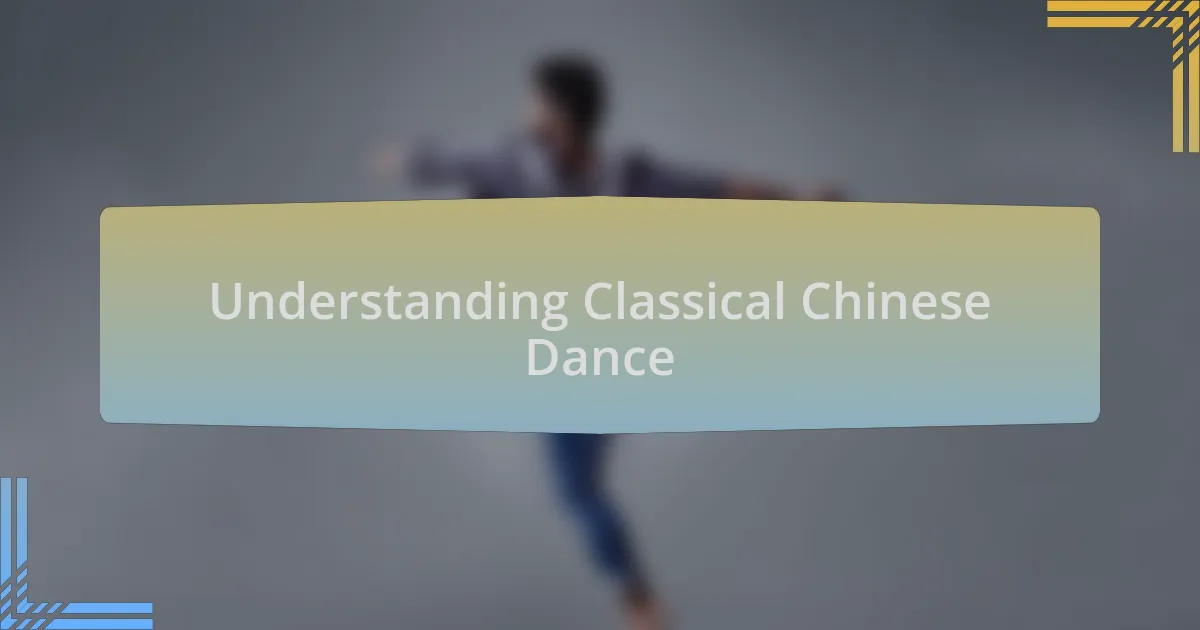
Understanding Classical Chinese Dance
Classical Chinese dance is an exquisite blend of artistry, tradition, and storytelling. Every movement has significance, often conveying literary or historical narratives. I remember attending a performance where each dancer seemed to embody a character from a classic poem, and the emotions expressed through their gestures left me captivated. Have you ever felt a performance resonate deeply with you, evoking memories or dreams?
The technique in classical Chinese dance is foundational, emphasizing fluidity and grace. For instance, I once practiced a simple movement that required deep concentration on my posture and breathing. This experience made me realize how the dance form not only refines physical skills but also cultivates mental discipline. It’s fascinating to think about how many layers of meaning can be expressed through a single hand gesture or a subtle shift in balance.
Moreover, music plays a vital role, enhancing the visual spectacle. I’ve often found that the traditional instruments, like the erhu and guzheng, create a poignant backdrop that breathes life into the choreography. When you listen closely, the music seems to guide the dancers, making their movements more poignant and alive. It’s a beautiful reminder of how interconnected sound and movement can be, don’t you think?
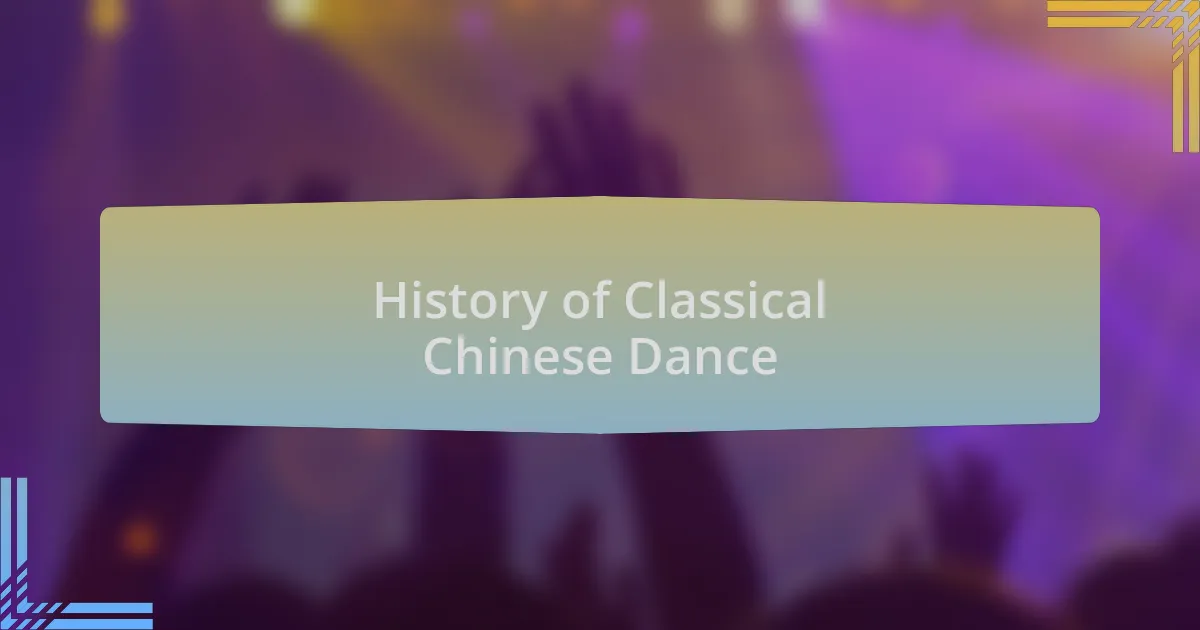
History of Classical Chinese Dance
Classical Chinese dance has roots that stretch back over 3,000 years, deeply intertwined with the rich tapestry of Chinese culture. I remember being struck by a performance that highlighted the origins of this art form, where movements reflected ancient rituals and philosophies. It’s interesting to think about how these dances were once integral to court ceremonies, conveying social status and conveying historical narratives through body language.
Through periods of dynastic change, classical Chinese dance evolved, adopting elements from various regions and cultures. Once, while attending a workshop, a teacher explained how the Ming and Qing dynasties contributed to the refinement of techniques, enriching the dance’s storytelling aspects. This made me appreciate the dance’s capacity to bridge historical gaps, as each gesture embodies stories from different eras.
In contemporary times, classical Chinese dance continues to flourish, adapting to modern sensibilities while honoring traditional roots. I felt a sense of connection during a recent festival where young dancers performed classical pieces infused with contemporary aesthetics. It prompts me to ask: how do you see the balance between preserving tradition and embracing innovation in the arts? It’s a dance of its own, don’t you think?
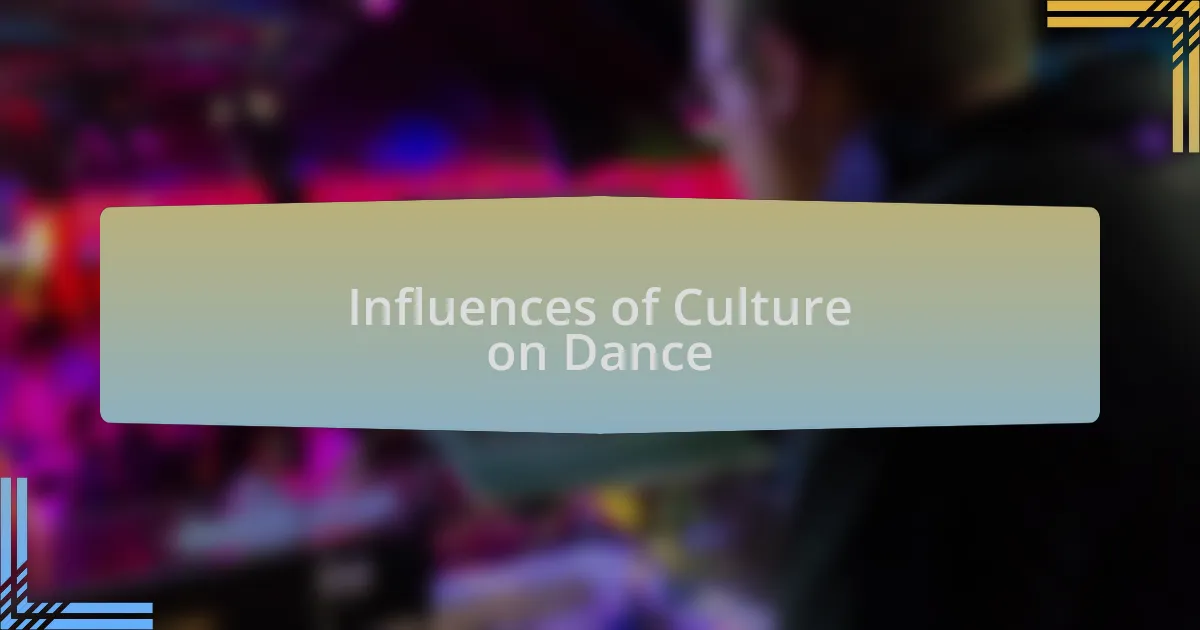
Influences of Culture on Dance
Dancing has always been a reflection of cultural identity, and I can vividly recall a festival where performers donned vibrant costumes, each representing a specific region of China. The intricate designs not only captured my attention but also told stories of that region’s history and traditions, illustrating how deeply culture shapes the way we express ourselves through movement. When I see these performances, I can’t help but wonder: how much do our cultural backgrounds inform our own expressions in dance?
Different regions contribute their flavors, and I remember attending a workshop that focused on ethnic minority dances within China. The instructor shared insights on how various tribes infuse their unique histories, beliefs, and local myths into their movements. It was fascinating to see dancers interpret age-old stories through graceful choreography. This experience made me realize how culture serves as a canvas, allowing dancers to paint their stories with every step.
The influence of philosophy and spirituality in classical Chinese dance is profound, and I have personally felt this connection during performances centered around themes of nature and harmony. Watching dancers embody concepts like yin and yang through their movements struck a chord within me, making me reflect on the balance in my own life. It poses an intriguing question for anyone who dances: how do our personal beliefs and cultural influences shape the way we move and communicate through dance?
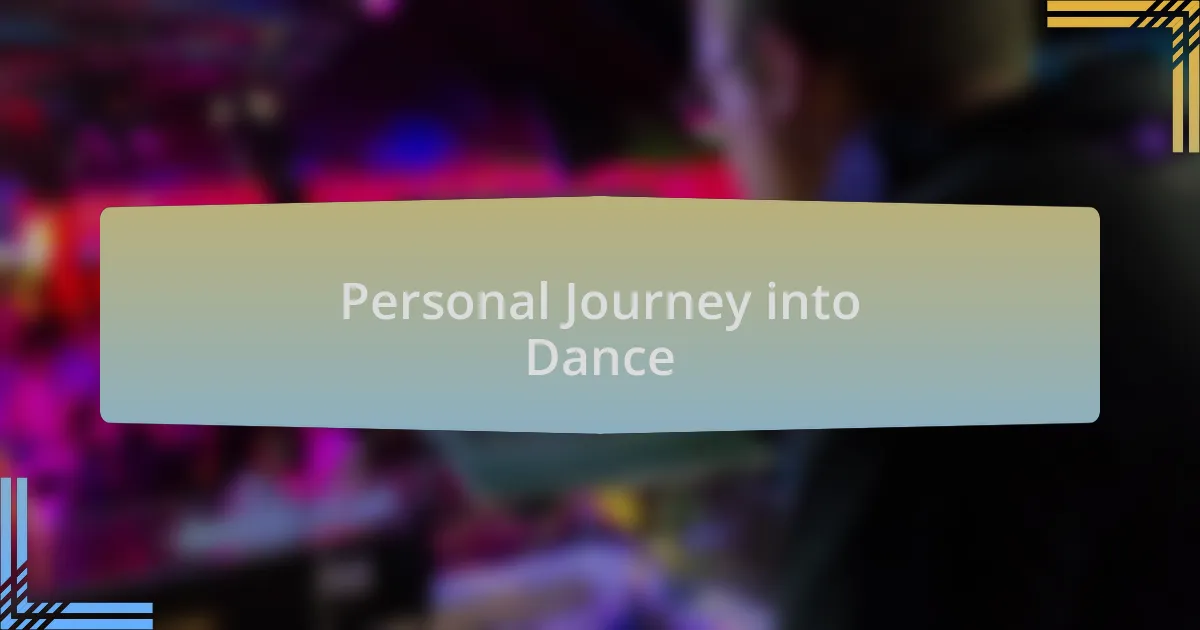
Personal Journey into Dance
There was a moment in my youth when I stumbled upon a local dance class, and that decision changed everything for me. I remember entering the studio, the air filled with the sound of soft music and the sight of people moving with such elegance. It was in that moment I knew I had found my passion—the way each movement seemed to tell a story resonated deeply with me. Have you ever experienced that kind of awakening?
As I became more involved in dance, I found myself drawn to the teachings of classical Chinese dance, especially the emphasis on grace and storytelling. During one rehearsal, our instructor encouraged us to channel our emotions through movement, asking us to express our personal experiences. I recall feeling vulnerability transform into power as I danced, conveying my own journey through the delicate combination of strength and fluidity. Wasn’t it astounding how dance can serve as an emotional release, allowing us to connect our inner worlds to the outer one?
Exploring the intricate techniques of classical Chinese dance further deepened my appreciation for movement as an art form. One evening, while performing a piece inspired by the changing seasons, I felt an overwhelming connection to the cycles of nature and life. My body seemed to move in harmony with the rhythms of the earth, and I realized that dance was not just an art; it was a pathway to understand myself and my surroundings better. Have you ever found a reflection of your own life in the rhythm of a dance? This journey has not only shaped my identity but continues to redefine my perspective on the world around me.
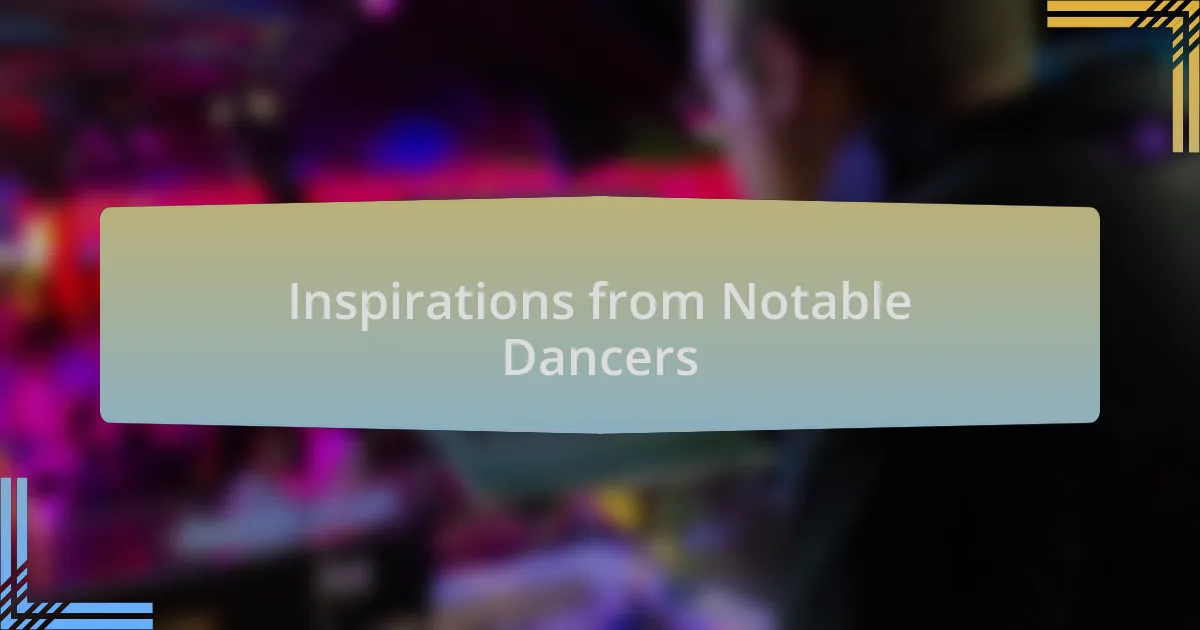
Inspirations from Notable Dancers
Inspirations from notable dancers often ignite a spark in those of us who aspire to master the art. I vividly recall watching a performance by the renowned dancer Shen Wei, whose fluid movements seemed to effortlessly tell vivid stories. His ability to blend traditional Chinese elements with contemporary flair left me in awe and inspired me to explore beyond the boundaries of classical dance conventions. Have you ever felt invigorated by someone else’s passion?
Then there’s the influence of Yang Liping, whose electrifying grace and powerful expressiveness captivated my heart. I remember seeing her perform “The Peacock,” where each gesture and facial expression conveyed a depth of emotion that resonated within me. It made me realize how vital it is to connect emotionally with the audience and the story we want to portray through dance. Isn’t it fascinating how dance can transcend words to communicate profound feelings?
Finally, observing the journey of the legendary Qian Yi, who has dedicated her life to preserving and innovating classical Chinese dance, deeply inspired my own commitment to the craft. I remember her advice during a workshop, where she emphasized the importance of understanding one’s cultural heritage while also embracing individual expression. It struck me how dance can be a bridge between the past and the present, inviting us all to bring our unique voice to a timeless tradition. Have you considered how your own experiences could enrich the dance community?
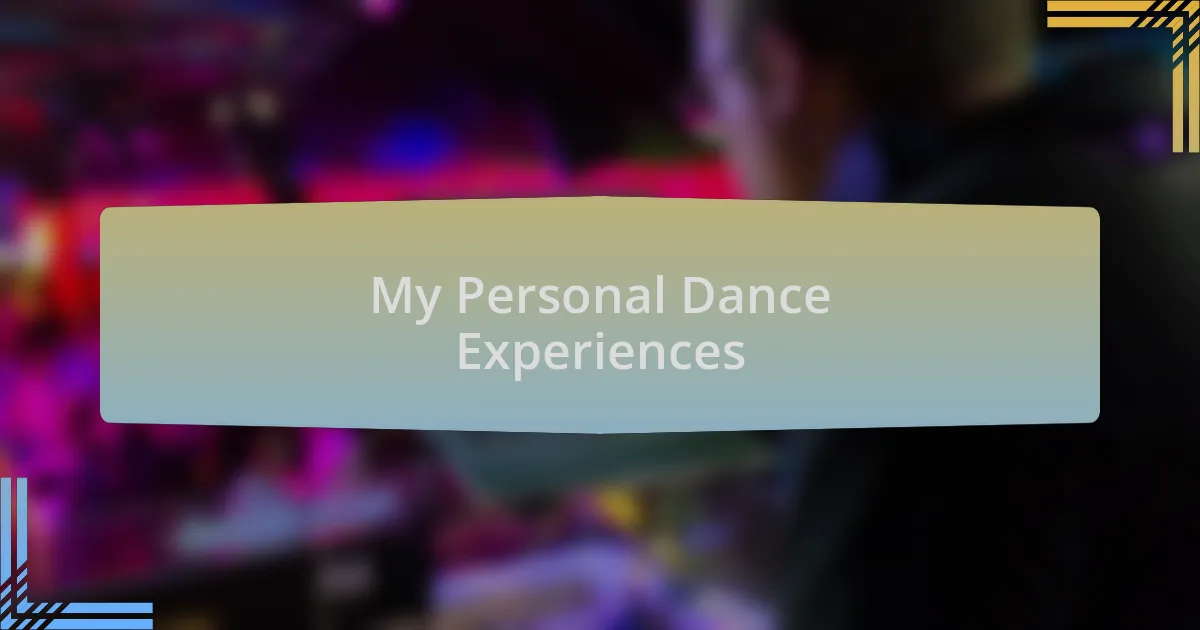
My Personal Dance Experiences
There was a time when I first stepped onto the stage, trembling with anticipation. The lights dimmed, and as I took my position, I felt an electric connection to the audience that is hard to describe. In that moment, it struck me how dancing isn’t just about technique; it’s about sharing a part of yourself, an intimate dialogue where each movement speaks louder than words. Do you remember the first time you felt the thrill of performing?
One memorable experience occurred during a community showcase, where I had the opportunity to interpret a traditional folk piece. I poured my heart into every gesture, channeling the resilience and beauty of the story behind the dance. Afterwards, a young girl approached me, her eyes wide with admiration, and I saw a reflection of my own childhood dreams in her. It made me realize that dance creates a ripple effect; it inspires both the dancer and the audience alike. Have you felt that impact in your own dance journey?
Another pivotal moment was when I participated in an intensive workshop focused on improving my technique. I remember struggling to master a challenging sequence; frustration bubbled within me, yet I persisted. With each attempt, I gained not only skill but also a deeper appreciation of the art form. When I finally nailed the sequence, it felt like I was dancing with the spirit of the countless dancers who came before me. Isn’t it incredible how each challenge we face in dance becomes a stepping stone toward growth?